By Robert Cashner
Ever since the tank appeared on the battlefield during World War I, armies the world over have sought to field man-portable infantry antitank weapons to give the infantryman a viable defense against the metal monsters. Long before the PTRS 41 was the Germans’ first attempt, made during World War I with the 13.2mm Tank-Gewehr Model 1918: a monster Mauser anti-tank rifle five and one-half feet long and weighing 40 pounds. While it could indeed penetrate the armor of World War I tanks, recoil was so brutal that few infantrymen wished to fire it more than once.
Between the world wars, for lack of anything better, several armies fielded anti-tank rifles. Some, such as the Germans and the Poles, opted for small-caliber weapons firing extremely high velocity hardened-core projectiles. At the other end of the scale were the “rifles” chambered for cannon ammunition, such as the Finnish Lahti, Swiss Solothurn, and Japanese Type 97, all of which used 20mm ammunition. Somewhere in the middle fell the British Boys .55-caliber antitank rifle.
These weapons were actually effective enough in penetrating the armor of tanks from the 1920s and 1930s. In 1939, the antitank rifle was state of the art. By 1941, advances in tank armor and technology had rendered it all but useless. Yet it was not until 1941 that the Soviets had developed and put into production their own antitank rifle. (Read more about the weapons and armaments that shaped the war inside WWII History magazine.)
The Russian PTRS 41: “Destroy Fascist Tanks with the Anti-tank Rifle!”
Oddly, the Red Army had all but ignored this type of weapon until immediately prior to World War II. The first Soviet attempt was a rather feeble effort in “reverse engineering” so common to Soviet technology of the early Communist era. The Sowetskoe PTR Sholoklov 38 was an almost exact copy of the German Model 1918 Mauser. It was chambered for the Soviet 12.7mm heavy machine-gun cartridge, roughly equivalent to the American .50-caliber Browning machine-gun round. The only improvements to the World War I design were the addition of a somewhat effective one-chamber muzzle brake and a two-round magazine in lieu of being merely a single-shot weapon. The weapon was not produced in any real numbers, and it quickly disappeared.
Almost as soon as the sun set on the Shokolov, a new day was dawning for two weapons that were to prove a mainstay for the entirety of World War II.
Invented by Russian arms designer Vassily Degtyarev, who also created successful light 7.62mm machine guns and heavy 12.7mm DShK machine guns still in use today for the Red Army, the PTRD (protivotanko ruzhe systemy Degtyareva) Model 1941 (PTRD-41) antitank rifle appeared that same year.
The PTRD had an almost brutal simplicity that lent itself well to mass production and rugged dependability in the field. It was a single-shot weapon consisting of a four-foot barrel, bipod, pistol grip, and skeletal butt stock. Simple open sights were mounted on the left side of the weapon, as was a cheek pad for the shooter. This kept the shooter’s face away from the recoiling parts.
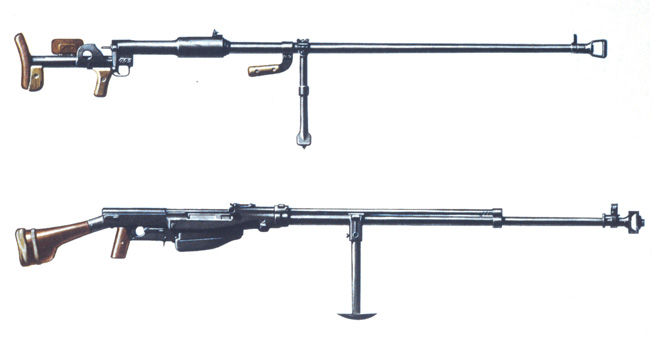
Other than the cheek pads, butt pads, and wooden pistol grip, the entire weapon was constructed of steel. Over six and one-half feet long the weapon, despite its streamlined design, still weighed 38 pounds. A muzzle brake was fitted. While it did help reduce recoil, it also produced a violent muzzle blast that could sometimes reveal the location of the weapon and crew. The Soviet field manual titled Destroy Fascist Tanks with the Anti-tank Rifle!, stated: “The modest dimensions, ease of carry and camouflage, and precision and accuracy of firing all impart high combat qualities to the rifle.” An atrocious 11-pound trigger pull, however, made accuracy a bit harder to achieve.
The PTRD was served by a two-man crew. Extra ammunition was carried in a canvas pouch with shoulder strap that contained 15 rounds. When fired, the barrel recoiled in its “stock” in a long recoil manner of operation. At the end of the recoil travel, the bolt locked to the rear and the barrel returned to its forward position, ejecting the spent casing and leaving the chamber open for the assistant gunner to insert a fresh round. When he had done so, he usually tapped the firer to let him know the weapon was ready again. A good crew could deliver eight to 10 aimed shots per minute. Tactically, the two-man antitank rifle teams usually worked together in squads of three weapons teams.
Sergei Simonov’s PTRS 41
The other main Soviet antitank rifle, this one designed by Sergei Simonov who also created the still popular SKS carbine, was the PTRS-41, or protivotanko ruzhe systemy Simonova. This weapon was more complicated than the simple and reliable PTRD. Gas piston-operated, the PTRS-41 ejected the spent case and stripped another round from the magazine semiautomatically when fired. A multiple setting gas regulator, which could be likened to the one on the FN FAL rifle, offered adjustments to ensure sufficient gas power and was vented from the barrel to the piston even when the weapon was dirty or extremely cold. Fitted with a muzzle brake, the gas-operated system also helped to soak up some of the massive recoil, making the PTRS more pleasant to fire than the PTRD.
The PTRS-41 was still a massive hunk of iron. Also having a four-foot barrel, the beast was a total of seven feet long and weighed around 46 pounds. However, the barrel could be removed to make the weapon easier to transport by two men. The weapon was fed by a five-round magazine that was remarkably similar to the stamped steel “enbloc” clip used by the American M1 Garand rifle. It loaded upward into the magazine well. Single rounds could also be loaded and fired manually from the top of the receiver.
A Million and a Half Russian Anti Tank Rifles
The clip feed and semiautomatic action should have been a considerable bonus, as even the big 14.5mm round usually required multiple hits to disable an armored vehicle. However, the PTRS 41 was not nearly as successful as the simpler PTRD. It was prone to jamming if the least bit dirty, and the powerful 14.5mm cartridges tended to rapidly foul the gas port needed to cycle the weapon. It was issued in smaller numbers and saw less use than the PTRD. The PTRS teams worked in the same way the PTRD teams did but could put out many more rounds per minute.
Two main factors kept the Soviet antitank rifles viable in an age when they were disappearing from the battlefield. The first was the unique caliber of the Soviet weapons, the 14.5mm, which made them probably the most effective of the antitank rifles. The second was the great number of the weapons produced.
The cartridge that was eventually settled upon was the flat-based BS-41 (API) Armor Piercing Incendiary, which fired a massive 1,011-grain projectile (the standard .30-caliber rifle bullet of the day was only around 150 grains) with a 597-grain hardened steel or tungsten penetrator and an internal charge of incendiary material. With a muzzle velocity of 3,300 feet per second, it could penetrate some 25mm of armor at 500 yards, 40mm at 100 yards, and the incendiary agent could set fire to flammable materials it contacted.
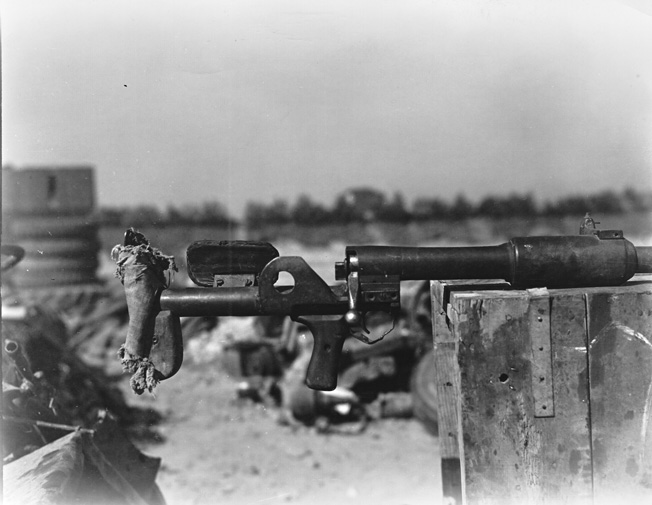
The 14.5mm proved much more effective than the rounds used in most of the other antitank rifles of the day and is still in use in heavy tank machine guns and light antiaircraft guns today.
Soviet dictator Joseph Stalin has been quoted as having said, “Quantity has a quality all its own.” Some 17,000 PTRDs were produced. By the end of the summer of 1943, a million and a half antitank rifles had been cranked out by Soviet state factories. The American Field Artillery Journal noted that by the end of 1942, provision of rifle regiments with antitank rifles had increased 416 percent since their adoption in 1941. The weapons stayed in production right up to the end of the war.
Each infantry regiment included an antitank rifle company, with 27 antitank teams. Each infantry battalion also had an antitank rifle platoon with nine antitank rifles. To reinforce hot spots, such as Kursk, the Soviets threw in independent antitank rifle battalions. Each battalion had three companies of 70 men and 18 to 20 antitank rifles each. Attaching an additional 60 or so antitank rifles to a unit gave it some real extra teeth against enemy armor.
German armored commander Maj. Gen. F. von Mellenthin complained after the war, “The Russian and his antitank weapon are inseparable; sometimes it seemed as if every infantryman carried his own antitank rifle.”
Russian Antitank Rifles Against Germany’s Panzers
With such extensive numbers and so powerful a caliber, the PTR antitank rifles were feared by the Germans. It was primarily due to hits and penetrations from these powerful and numerous antitank rifles that the Wehrmacht increased the Mark IV’s armor in the Ausf. B and Ausf. E models of the original Mark IV medium tank. The Ausf. G model added even more armor and Schurzen armor skirting over the sides and tracks.
Despite the reputation of German leviathans such as the Tiger, Panther, and Elefant armored vehicles, the predominant tank in German service throughout the war remained the venerable, dependable Mark IV. In fact, Col. Gen. Heinz Guderian, a legendary German armored commander, even recommended a “quantity over quality” approach, concentrating on mass-producing upgraded Mark IVs rather than expending valuable time, resources and manufacturing capabilities developing new tanks.
The PTR series of weapons with the BS-41 tungsten-cored armor-piercing round was able to penetrate 35 to 40mm of armor at 300 meters; the side armor of the German Mark III and Mark IV tanks was only 30mm at its thickest on the flanks. The addition of another 8mm of steel armor Schurzen, physically separate from the hull armor, in addition to providing extra thickness, caused the 14.5mm round to expend much of its energy and begin to tumble from a nose-first attitude while penetrating this first layer. It also helped to protect the more vulnerable wheels and suspension system.
Some Western historians have nicknamed these skirts “bazooka pants” and attribute their addition to the appearance of shaped-charge weapons such as the American bazooka and British PIAT. The use of Schurzen was undoubtedly quite effective against shaped-charge HEAT (high explosive antitank) rounds as well, but its adoption was due to Soviet antitank rifles. German accounts from both the field and manufacturers lay the adoption of Schurzen squarely at the feet of the endless supply of Soviet antitank rifles.
Guerdian stated, “The ‘aprons’ were sheets of armor plating which were hung loose about the flanks and rear end of the Panzer III and Panzer IV and the assault guns; they were intended to deflect or nullify the effect of the Russian infantry’s antitank weapons, which could otherwise penetrate the relatively thin, vertical body armor of those types of vehicle.”
Facing Tigers and Panthers
When the new generation of German armored fighting vehicles appeared, they were more formidable and heavily armored than the ubiquitous Mark IV. The Mark V Panther and Mark VI Tiger had up to 110mm of armor, the Jagdpanther tank destroyer 120mm, and the massive Elefant as much as 200mm. Realistically, the 14.5mm round could do no more than put gouges in such thick steel hides.
Even so, the antitank riflemen engaged the new behemoths like a swarm of flies tormenting a maddened bull. To increase the odds of success, under ideal conditions as many as 10 Soviet antitank rifle teams would engage one platoon of three or four German tanks. Anti-tank riflemen were also trained to use the accuracy of the weapon to target known weak points of enemy tanks. Particular attention was paid to the vision slots; a blinded tank becomes quite vulnerable.
Decorated Tiger tank commander Otto Carius had a close call with a Soviet antitank rifleman. He said a glancing blow from a Soviet antitank rifle on his cupola’s Kinon vision block blinded it and knocked off a chunk that ricocheted inside the turret. Carius believed that a direct hit at a flat angle would have penetrated completely.
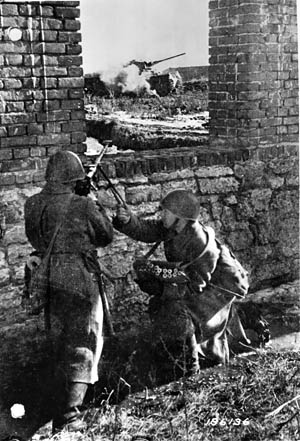
Another Tiger tanker noted that when engaged by multiple Soviet antitank riflemen at close range, most of the tanks’ vision blocks had been shot out in a matter of minutes. The commander and gunner searched in vain to locate and engage the riflemen with their cannon and machine guns but, “[The antitank rifle teams] always went to other positions and then disappeared again as quick as lightning.”
In the wartime Soviet field manual, the riflemen were advised to execute the very tactics that frustrated the German tankers, such as:
In all cases have secondary firing positions.
Take 5 to 10 shots from one position, then move to another.
If the enemy tank is moving in a direction not favorable to you, quickly and discreetly occupy another position in order to shoot it in the flank or rear.
Maneuvering on the battlefield, guide the tank into the fire of another tank crew.
In July 1942, a Soviet sergeant shrugged and told a Western reporter with rural Russian stoicism and simple eloquence, “What is a tank? I can see it, but it can’t see me. My rifle is small and hard to hit, but a tank is big. All you have to do is aim at it.”
It was seldom as easy as that. Bearing in mind wartime propaganda, a German report claimed that, in February 1943, one of the vaunted new German Tiger tanks sustained an incredible 227 hits from Soviet antitank rifles and, while the suspension and road wheels had been heavily damaged, the Tiger was able to keep moving and fighting for the duration of the battle.
Tank Killing Aces of the Soviet Army
The Soviets even had tank killer aces. Two antitank riflemen, Yablonko and Serdyukov, were credited with 22 tank kills between them, and Sergeant Ilya Derevjanko knocked out 10 by himself. Another antitank rifleman named Manenkov of the 95th Rifle Division was made a Hero of the Soviet Union for destroying six German tanks in the vicious street fighting in Stalingrad.
Just as they had female pilots, artillery crews, and snipers, the Soviets also had female antitank teams. These teams consisted of three members instead of the usual two-man teams to better haul the heavy weapons. It was no wonder the extra crew member was needed. With the rifle alone weighing 38 or 46 pounds, the standard 200 rounds of 14.5mm ammunition added over 60 more pounds. To this was added the weight of personal weapons and ammunition, field gear, equipment, bedrolls, rations, and more
As with most other nations’ antitank rifles, the Soviet weapons also found use against light armored vehicles, trucks, and infantry positions. The Soviet Infantry Manual noted: “If no tanks and armored vehicles are present, on orders of the antitank rifle squad leader the antitank rifles can take under fire enemy machine guns, artillery and the firing slits of bunkers and forts at a range out to 800 meters and aircraft at a range of up to 500 meters.”
Private Vassily Kovtun of the 902nd Rifle Regiment was given credit for destroying four tanks, two armored personnel carriers, and two armored cars. The big antitank rifles were also handy for reaching enemy soldiers behind cover in house-to-house street fighting. Antitank rifle ace Ivan Knjazev of the 310th Guards Rifle Regiment was credited in a Soviet report with “67 AFVs, MGs, guns and mortars.” Kovtun was also credited with knocking out 20 German machine-gun nests.
“The Ideal Weapon For Partisans”
When the U.S. Department of the Army, using interviews with German veterans of the Eastern Front, published Russian Combat Methods in WWII at the beginning of the Cold War, the report said of the antitank rifle: “It was to be found even where no German tank attacks might be expected…. If the small gun, always excellently camouflaged, was not needed for antitank defense, its flat trajectory and great accuracy were put to good use in infantry combat.”
Antitank rifles were also extremely popular weapons to air-drop to Red partisans operating far behind enemy lines to give them a powerful yet portable weapon to use against German supply lines and support units. Rear-area German security forces usually had only light armored cars or tankettes, often captured enemy models, to utilize for patrols and reaction forces. These lightly armored vehicles and supply trucks could be easily defeated by the powerful 14.5mm weapons.
One partisan said of the PTR dropped to his troops, “It was the ideal weapon for partisans. Its accuracy was amazing, and a trained PTR crew could hit the boiler of a railway at 800 meters. This enabled us to ambush German trains in daylight, shooting them up from a safe distance.”
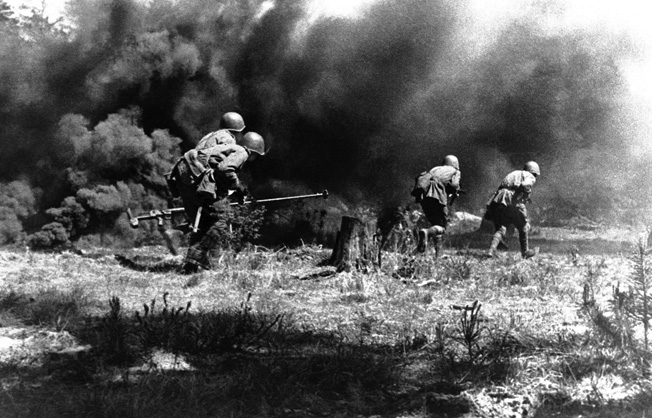
Although it was not a dedicated antiaircraft weapon, the PTR was often fired at German planes. The weapon was certainly powerful enough to knock down an aircraft. The 14.5mm round is still used in light antiaircraft cannon to this day. On July 15, 1943, Soviet propagandists credited an antitank rifleman named Denisov with using his PTR to shoot down two “Fascist bombers,” and Private Semen Antipkin with destroying eight tanks and one German aircraft.
It should be noted, however, that Soviet doctrine dictated firing every available weapon at attacking German aircraft. It proved to be effective enough to make ground support missions by the Luftwaffe very unpleasant.
One German pilot reported on Luftwaffe aircraft losses in February 1942: “Every Soviet ground unit attacked by our aviation opens fire on our planes with rifles and other infantry weapons. The probability of hits on a small target by widely distributed ground fire is very great…. Mortar fire is also used. I do not point this out as an example to be followed but to explain that the Soviets fire on aircraft with all weapons used by ground troops.”
The End of the Soviet Anti Tank Rifle
After World War II, the Soviets exported PTRS-41 antitank rifles as part of their effort to modernize and equip the North Korean Peoples Army. At the beginning of the Korean War, due to the limits of Japan’s road and bridge infrastructure, the U.S. Army had only M24 Chaffee light tanks available in theater. Thinner skinned than the German Mark IV, these light tanks proved quite vulnerable to PTRs. When heavier tanks such as the American M26 Pershing and British Centurion began to arrive, the PTR lost much of its utility as an antitank weapon.
Like the Soviets, the North Koreans continued to use PTRs in much the same way as modern antimaterial and special applications rifles. A 1951 U.S. Army intelligence summary ended, “Consequently, these rifles ostensibly find more employment at present against infantry concentrations, machine gun emplacements, and similar targets than as antitank weapons.”
The PTR also remained in service with other Soviet Bloc countries for after World War II. Albania kept them in its inventory until the early 1980s. Despite its utility as an antimaterial rifle in Soviet and Korean hands and the development of scoped PTR and other antitank rifles as long-range sniper rifles by military officers in the field, the U.S. Army brass showed absolutely no interest in the concept.
Forty years later, however, a similar anti-material rifle suddenly came back into vogue and is in great demand by armies around the globe, especially by military snipers and special forces. Today, more than a dozen countries manufacture such weapons, with four of those nations making antimaterial rifles chambered for the 14.5mm round. The current Hungarian-produced Gepard family of antimaterial rifles includes two different 14.5mm models, and the weapons bear a striking resemblance to the Soviet antitank rifles of 1941.
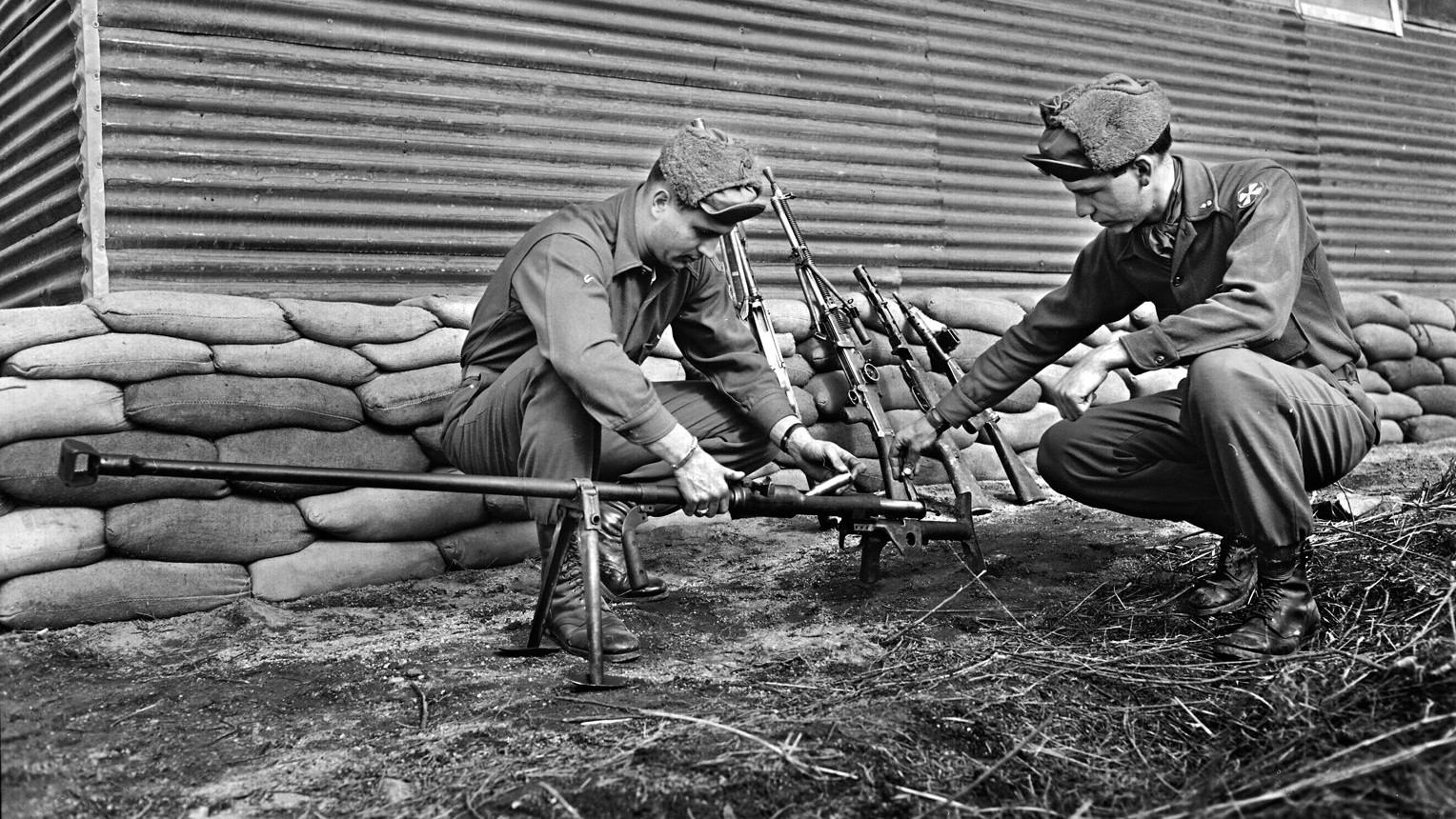
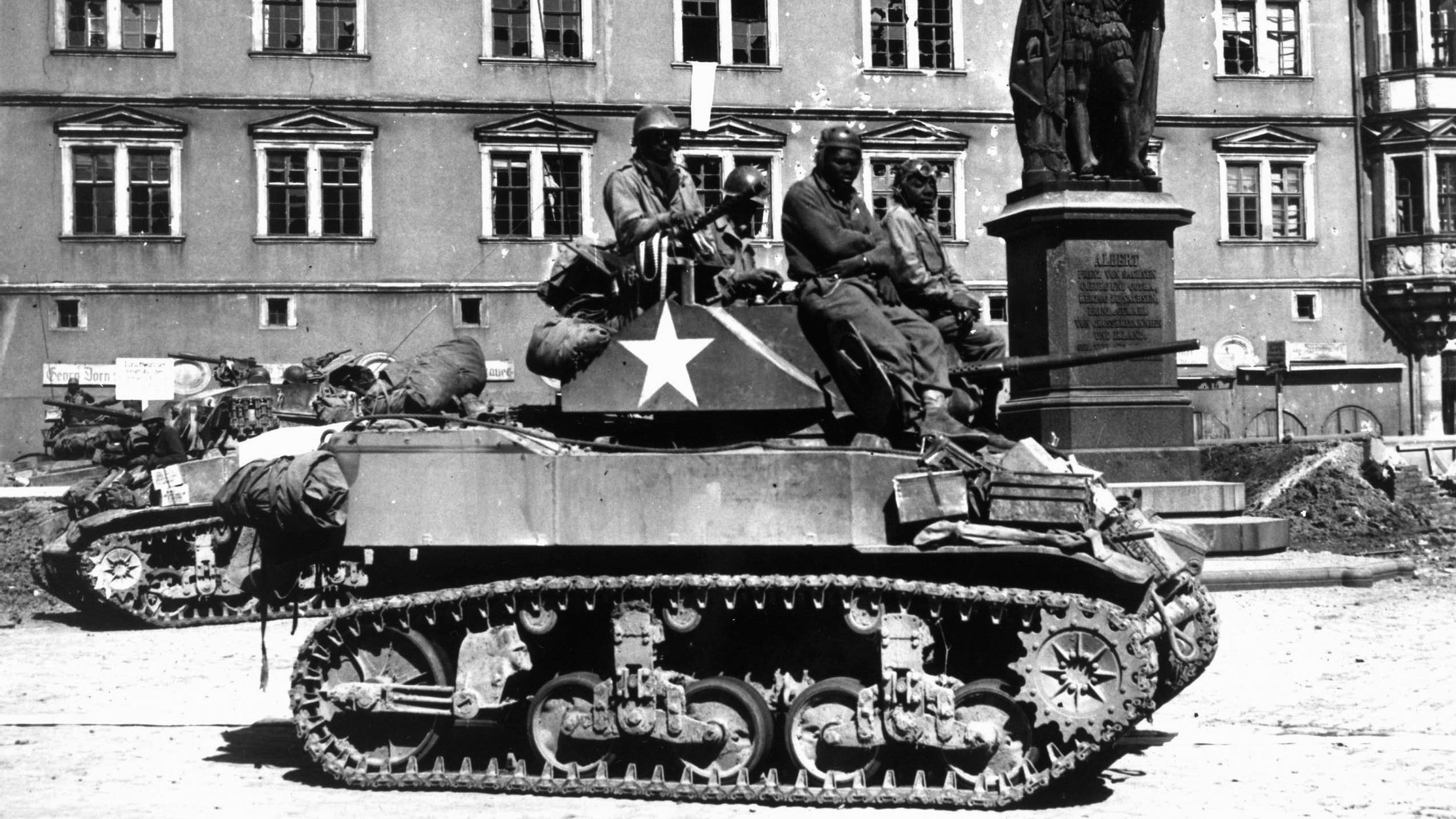
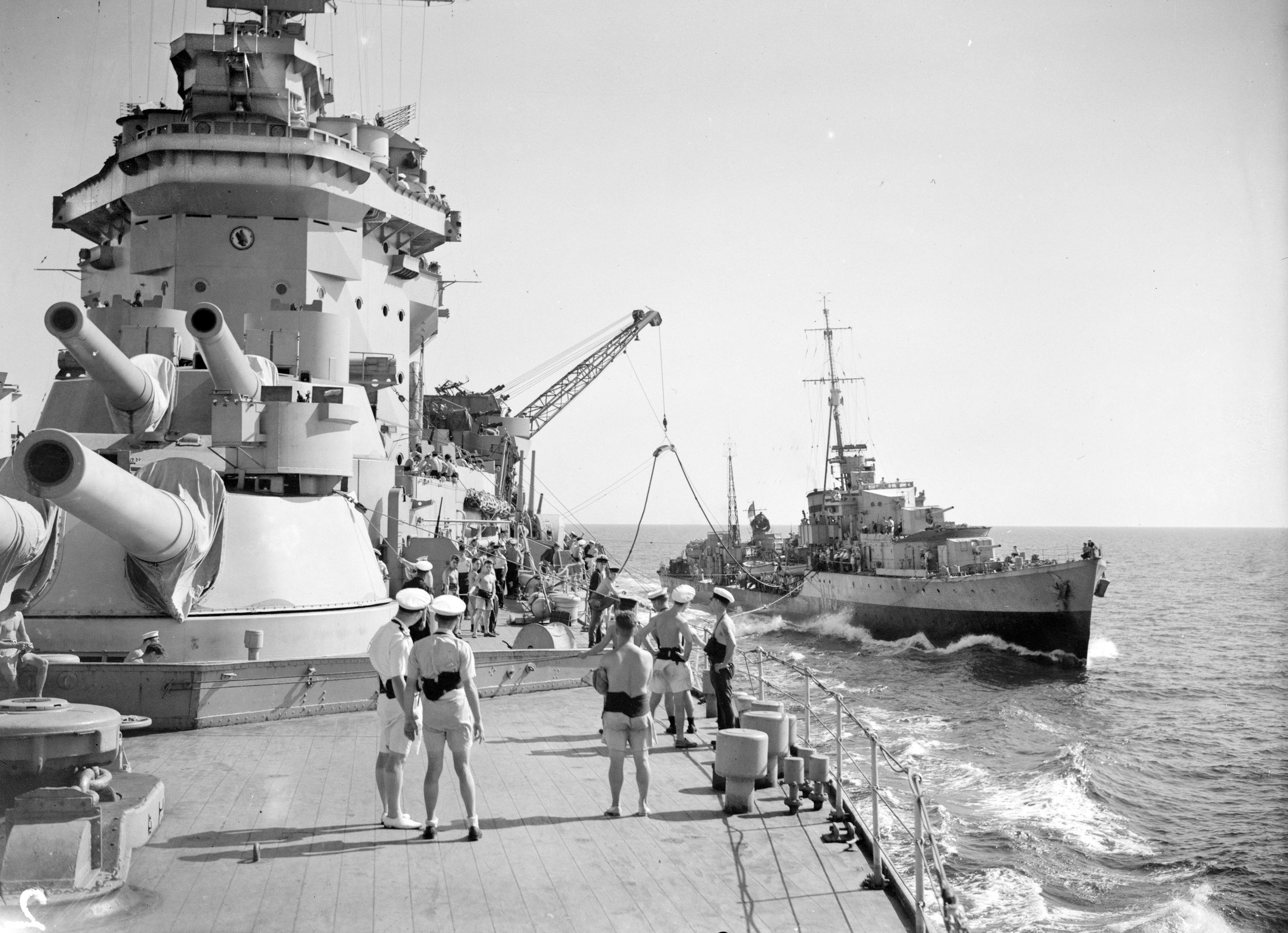
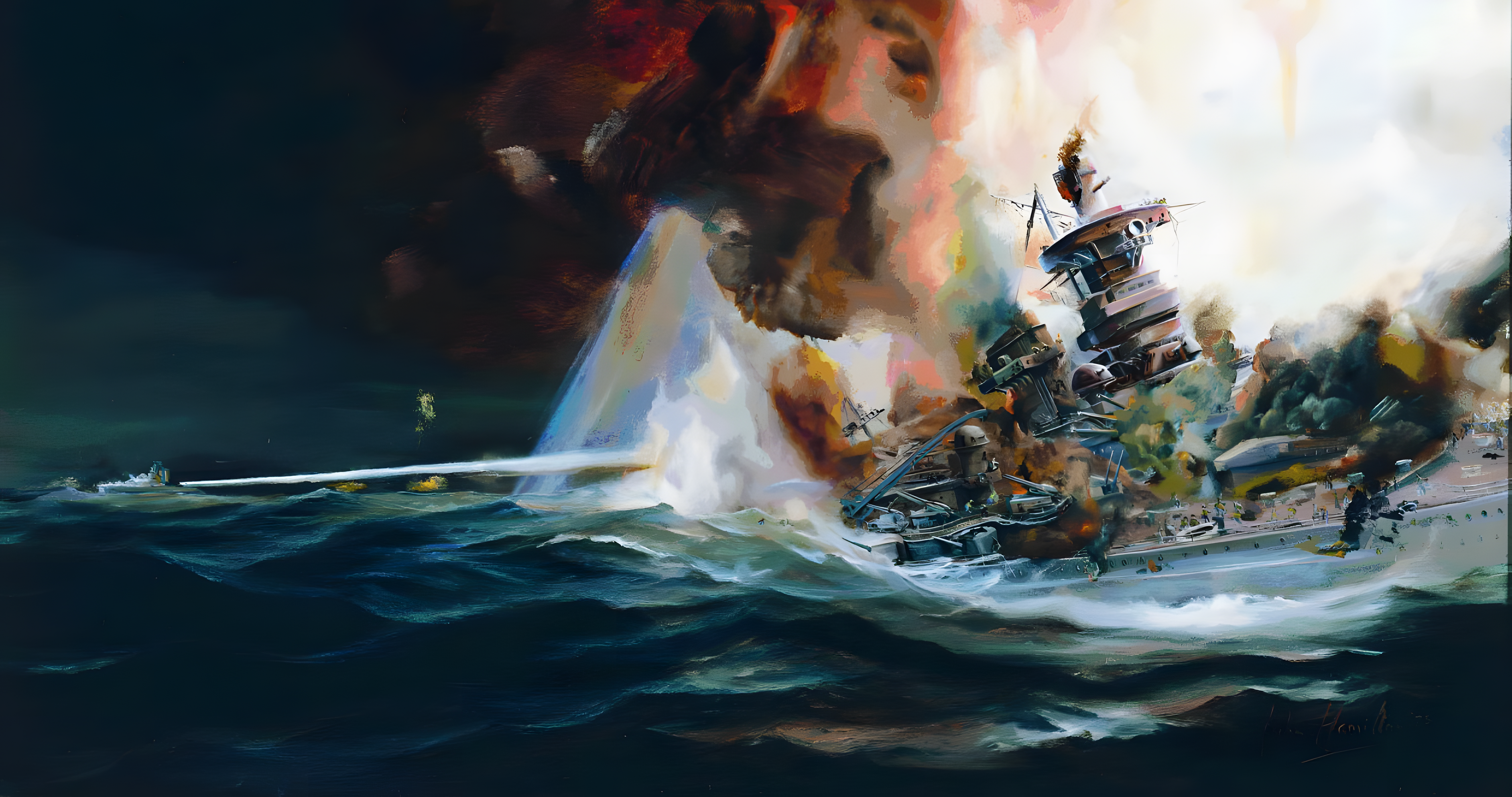
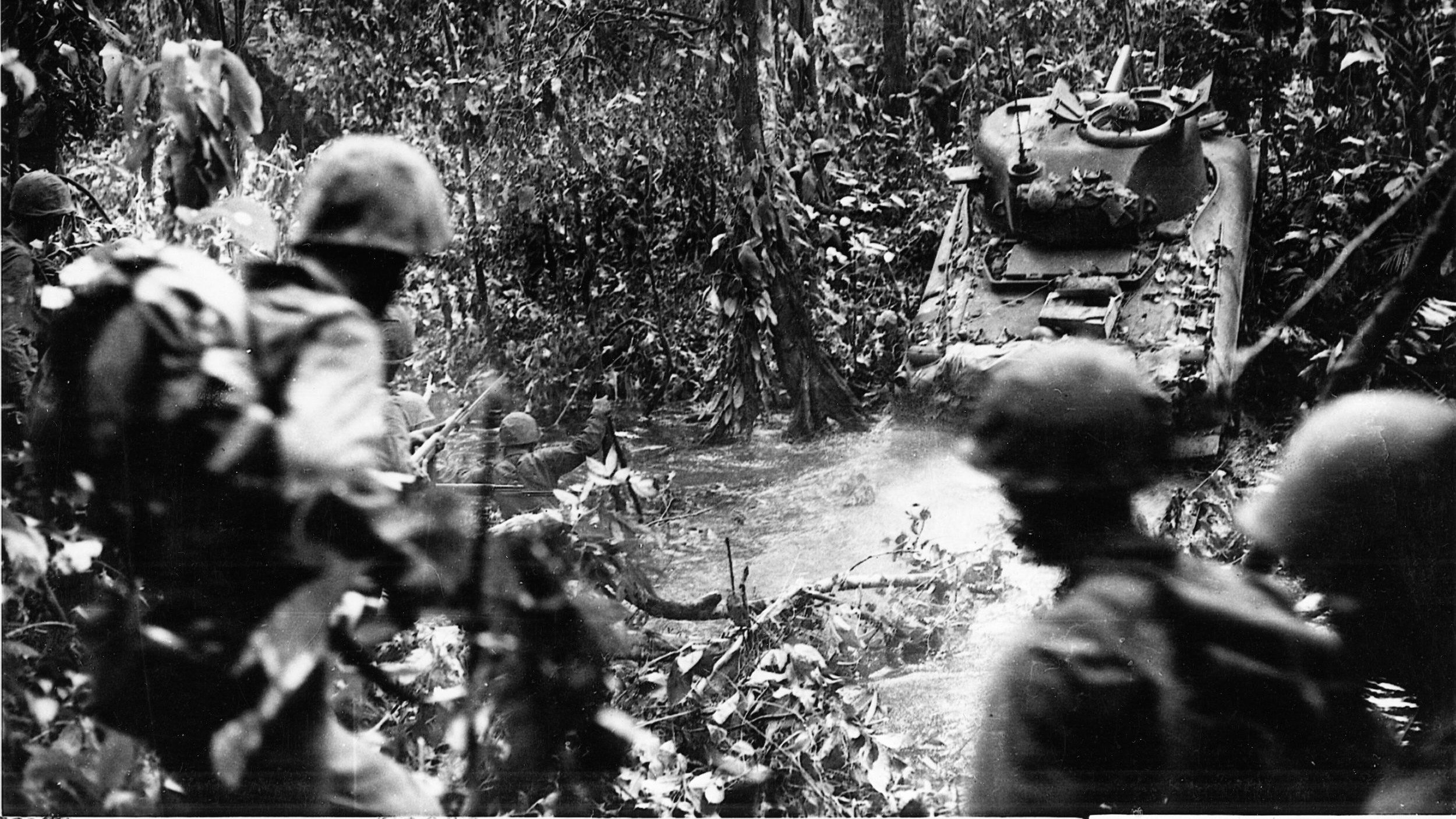
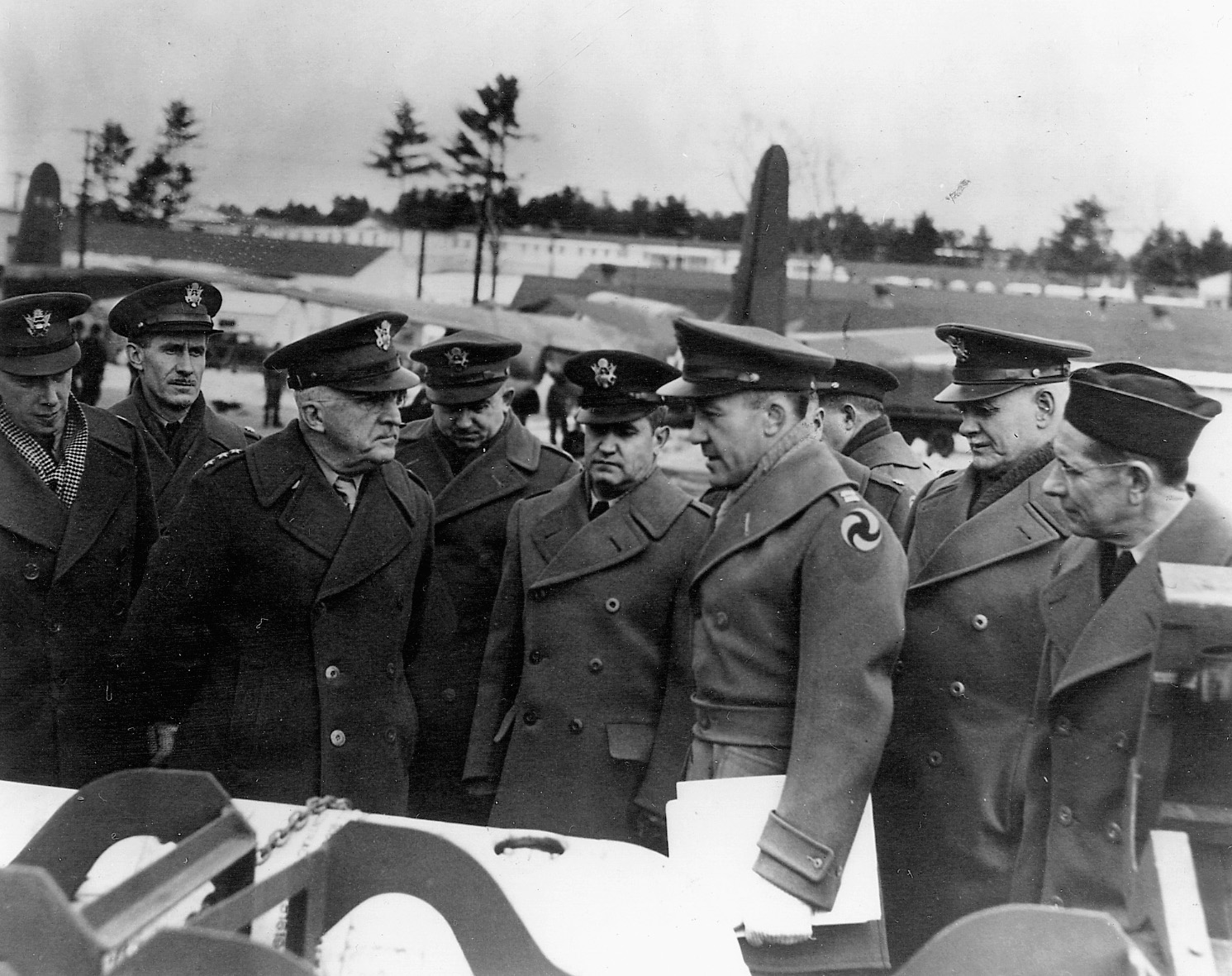
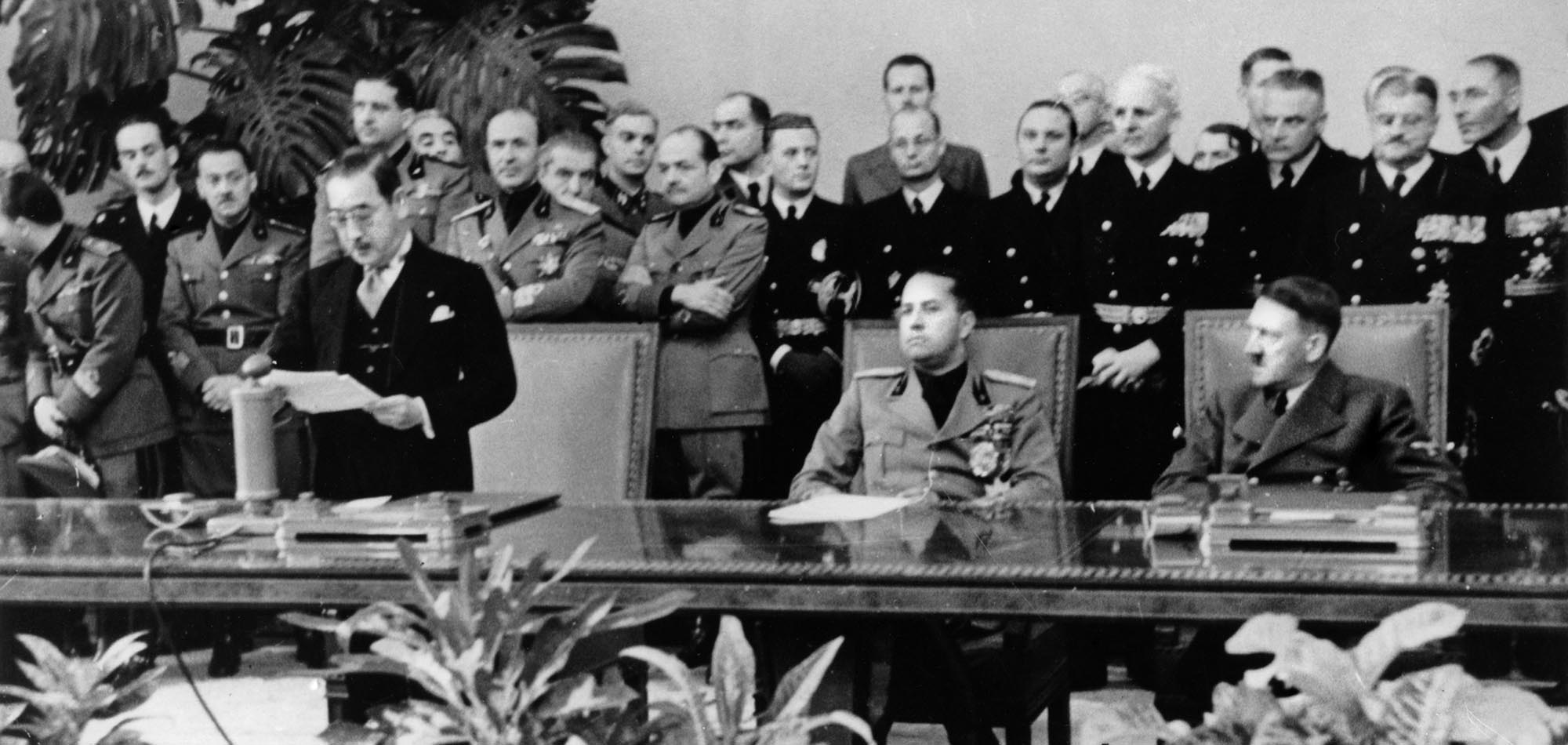
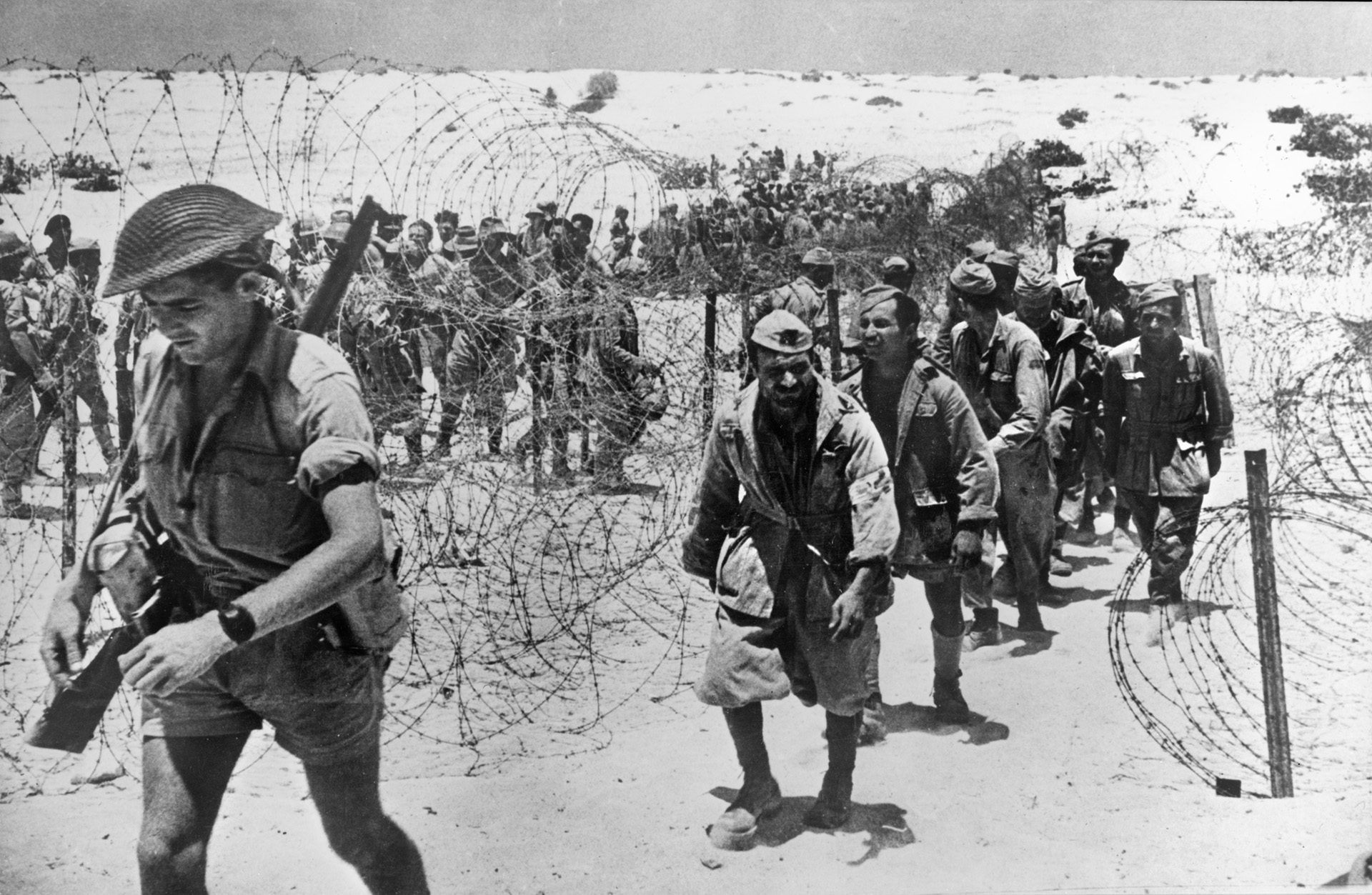
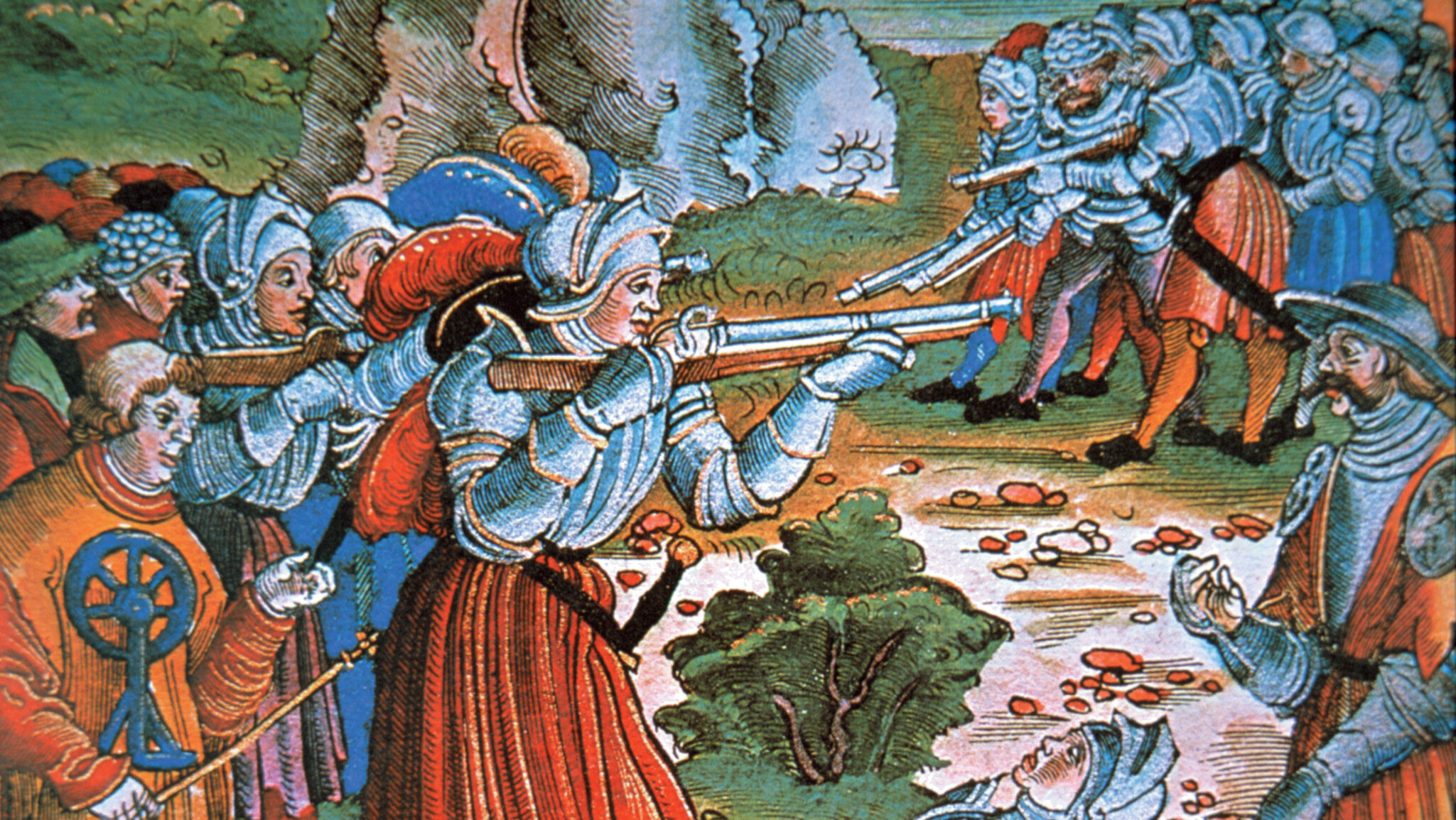
Very well written and informative article!
Soviet not Russian.